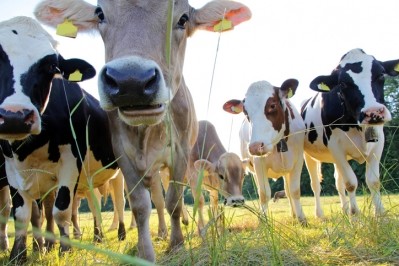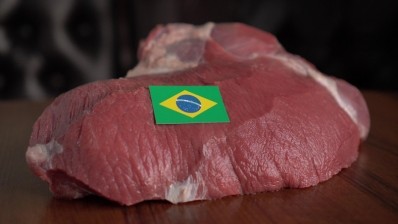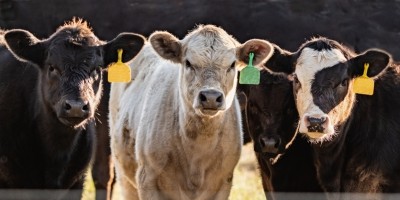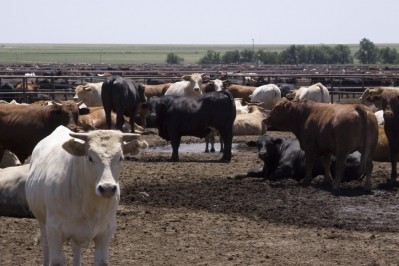Methane from cow burps could be lowered by a two-front approach
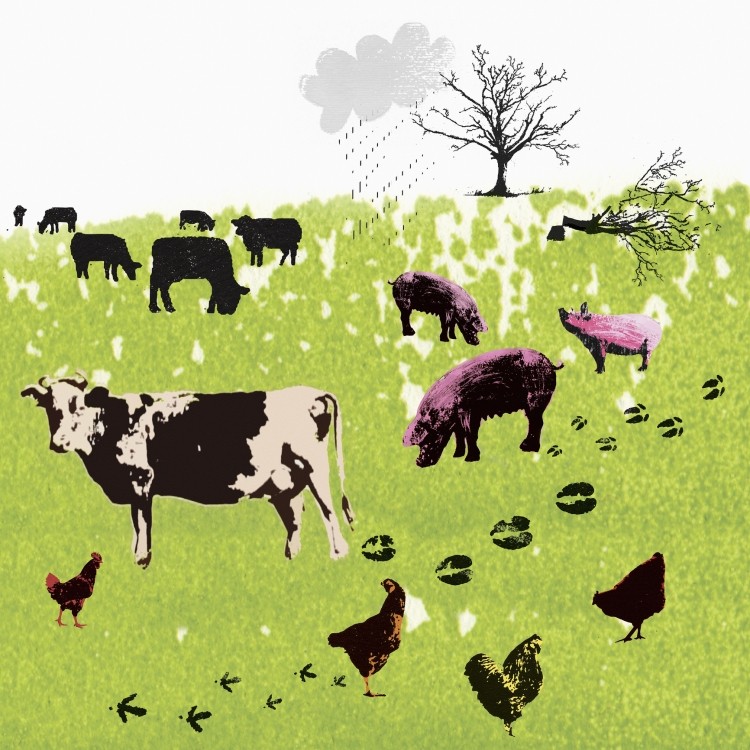
The study in question was carried out by a team of researchers from Aarhus University, Technical University of Denmark and University of Arizona under the project REMRUM funded by the Danish Council for Strategic Research.
The researchers published their findings in PLOS Genetics.
Cattle and other ruminants produce large quantities of methane, a potent greenhouse gas affecting global climate change. The gas is produced as a natural by-product of feed fermentation in the rumen.
There are serious efforts underway in the agricultural sector to find ways of reducing methane emissions. One of the methods is to select for cows that are genetically pre-disposed to emitting less methane, as cows vary in how much methane (CH4) they emit, said the Danish scientists. However, they said there is also another way.
They explained how they recently found that two separate factors influence dairy cows’ variation in methane production. One factor is the individual cow genotype while the other is the composition of her rumen microbiome. If breeders can target methane emissions on both these fronts, it could lead to greater advances in lowering methane emissions, they argue.
“We hypothesized that the total methane production by a cow is affected by rumen microbes that are directly responsible for production of methane, as well as the cows’ own genetics and their interaction.”
Methodology
They said they sampled rumen contents of 750 dairy cows on five commercial farms in Denmark. They measured individually the methane emission from these cows during automated machine milking for one week.
They observed considerable variation in methane emission among the cows. The top 10% of methane-emitting cows had a 41% mean difference from the lowest 10%.
In the rumen samples, the team said they found a wealth of microbes. They identified 3,894 bacteria and 189 archaea, a separate group of single-celled organisms, which were present in a minimum of 50% of the cow samples. The relative abundance of some of these microbes is heritable and associated with methane production, they said. However, the majority of variation in the relative abundance of rumen bacteria and archaea is due to non-genetic factors, they added.
“We compared the amount of variation in methane production associated with host genetics as well as rumen bacteria and archaea and found the host genetics to explain 21% and rumen microbes 13%.
“Importantly, the two were largely independent of each other, so breeding for low methane emitting cows is unlikely to result in unfavorable changes in the rumen microbiome. However, further functional annotation of rumen microbiota is needed to confirm this.
“Strategies that target each source of variation can be conducted in parallel to optimize reduction in methane production from dairy cows.”
Cows and climate change
- Cows, sheep and other ruminants produce methane in their digestive process.
- Methane (CH4) is a greenhouse gas that is roughly 30 times as heat-trapping as carbon dioxide (CO2).
- Methane has an atmospheric half-life of 12 years, which is substantially shorter than CO2 (> 100 years).
- Livestock accounts for 14.5% of anthropogenic-related greenhouse gas emissions. Methane emissions from ruminants account for 5.8%.
- Approximately 99% of methane emitted from cattle is released by burping and breathing.
- Methane emission from livestock is predicted to increase due to an expected doubling in the global milk and meat demand by 2050.
Source: Aarhus University
Feed additives
Targeting rumen microbial communities through feed additives, feed formulations, and anti-methanogen vaccines is also possible, but the researchers said that these strategies are not cumulative. Even transplanting rumen bacteria is not a permanent solution as the microbiome returns to its pre-transplantation composition after a short period, they added.
In contrast, focusing on the genetics of the cow and of the microbiome can have a more sustainable, persistent, and cumulative over subsequent generations, said the team.
“It is also necessary to clarify the mechanisms that allow rumen microbes to be passed on to successive generations, to assess the efficacy of perturbations of the rumen microbiome such as probiotics and rumen transplants aimed at desired changes to the rumen microbiome and associated changes in phenotypes,” they said.
They also determined the methane cows emit also has an energy value and represents a 2-12% net loss of the cow’s gross energy intake. Consequently, cattle and other ruminants with increased efficiency to digest high fiber feedstuffs but reduced methane production could in principal benefit the global climate and concurrently improve the profitability and sustainability of cattle production, they said.
Source: PLoS Genet 14(10): e1007580
DOI: https://doi.org/10.1371/journal.pgen.1007580
Title: Host genetics and the rumen microbiome jointly associate with methane emissions in dairy cows
Authors: Difford GF, Plichta DR, Løvendahl P, Lassen J, Noel SJ, Højberg O, et al. (2018)
